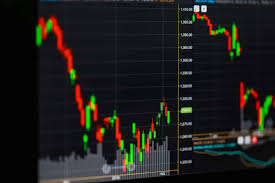
In the world of finance, the forex market stands out as one of the biggest and most liquid markets available. For traders looking to enter this fast-paced world, having an efficient and user-friendly trading platform is essential. A well-designed platform streamlines trading, helps manage risk, and provides essential tools to analyze the market effectively.
Use forex trading platforms ACEV to kickstart your trading journey and discover how the right platform can enhance your trading experience.
What is a Forex Trading Platform?
A forex trading platform is a software application that allows traders to buy and sell foreign currencies. These platforms provide tools for managing trades, tracking price movements, and making informed trading decisions. Platforms may be web-based or desktop applications, and they can vary widely in terms of features and usability.
Types of Forex Trading Platforms
Forex trading platforms can be categorized into several different types, each catering to different types of traders. Understanding these types can help you choose the right platform for your needs.
1. MetaTrader 4 (MT4)
MetaTrader 4 is one of the most popular forex trading platforms among retail traders, known for its user-friendly interface and robust features. MT4 supports algorithmic trading through Expert Advisors (EAs), allowing traders to automate their strategies. It also offers extensive charting tools, technical indicators, and the ability to customize trading environments.
2. MetaTrader 5 (MT5)
MetaTrader 5 is the successor to MT4, offering additional features such as more advanced charting tools, an economic calendar, and more timeframes. MT5 caters to a broader array of financial instruments, including stocks and commodities, making it a versatile platform for traders interested in various markets.
3. cTrader
cTrader is another popular trading platform recognized for its intuitive interface and advanced charting capabilities. It provides features like one-click trading and algorithmic trading through cAlgo, which allows traders to develop and deploy custom algorithms seamlessly.
4. TradingView
TradingView is widely acclaimed for its social trading capabilities and robust charting tools. While it primarily serves as a charting and analysis tool, many brokers integrate TradingView as part of their offering. This platform allows traders to share ideas, strategies, and analysis, creating an engaging community.
Key Features to Look for in a Forex Trading Platform
When choosing a forex trading platform, it’s essential to consider several key features that can significantly impact your trading experience:
1. User Interface
The user interface should be intuitive and easy to navigate. A complicated or cluttered interface can lead to mistakes, especially in fast market conditions. Look for platforms that are easy to use, allowing you to focus on trading rather than struggling with technology.
2. Trading Tools
Look for platforms that provide robust trading tools such as advanced charting, technical indicators, and risk management features. These tools can help enhance your trading strategies and improve decision-making.
3. Security
Trading involves financial transactions, so security is paramount. Ensure the platform uses SSL encryption and other security measures to protect your data and funds. Regulatory compliance is also essential; choose platforms regulated by respected authorities.
4. Mobile Compatibility
In today’s fast-paced world, mobile trading is becoming increasingly important. Ensure that the platform has a mobile app or a mobile-friendly interface that allows you to trade on the go, monitor markets, and manage your trades from anywhere.
5. Customer Support
Good customer support is crucial in resolving any issues you may encounter while trading. Look for platforms that offer 24/7 support via multiple channels such as live chat, email, and phone support. This ensures that you can get assistance when you need it most.
How to Choose the Right Forex Trading Platform
Choosing the right forex trading platform can be daunting due to the plethora of options available. Follow these steps to make an informed decision:
1. Define Your Trading Style
Understanding your trading style will help narrow your options. Are you a day trader who needs real-time data and fast order execution, or are you a long-term trader who values detailed analysis tools? Your trading style will guide your platform choice.
2. Compare Fees and Spreads
Different platforms have varying fee structures and trading spreads. Compare these costs, as they can impact your profitability. Look for transparent pricing and avoid platforms with hidden charges.
3. Test the Platform
Most reputable forex trading platforms offer demo accounts that allow you to test the platform without risking real money. Use this feature to get a feel for the platform and see if it meets your trading needs and preferences.
4. Read Reviews
Check user reviews and expert evaluations of different trading platforms. Feedback from other traders can provide valuable insights into the platform’s performance, reliability, and user experience.
Conclusion
Finding the right forex trading platform is crucial for achieving trading success. By understanding the different types of platforms, their key features, and how to choose the best for your needs, you can enhance your trading experience significantly. Whether you are a beginner or an experienced trader, the right platform can provide you with the tools to navigate the forex market successfully. Explore your options and invest in a platform that aligns with your trading goals.
